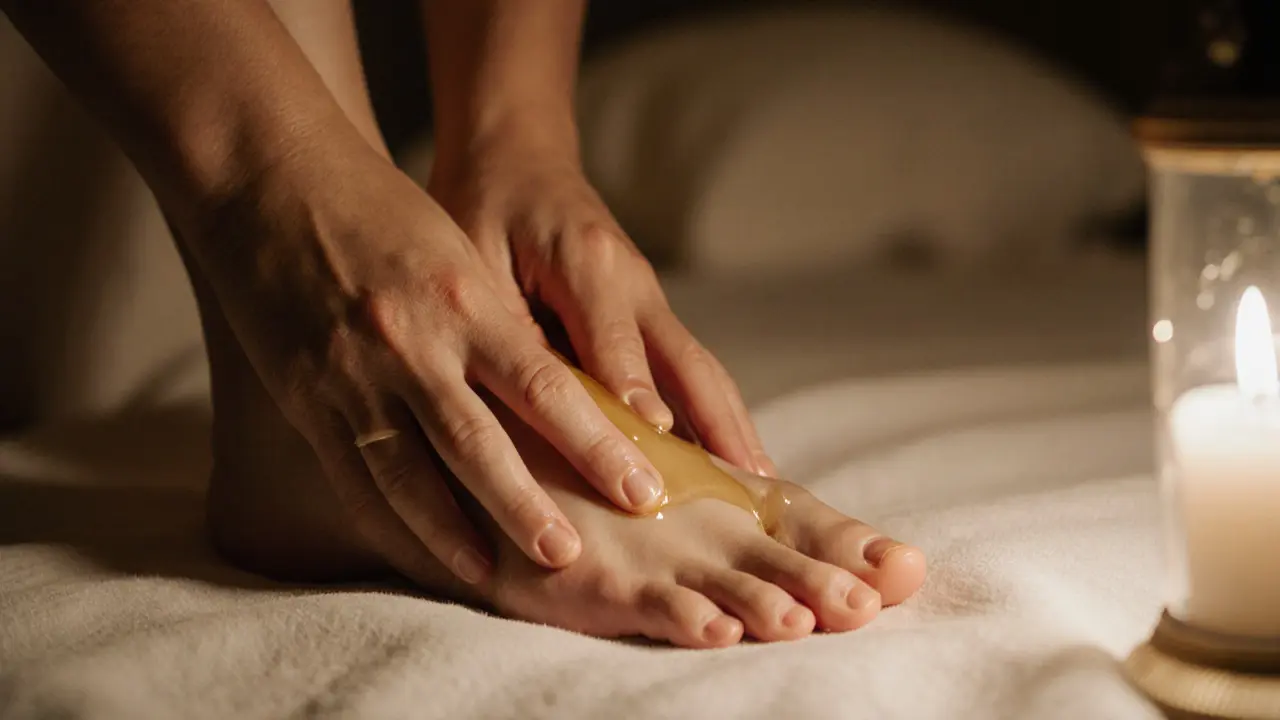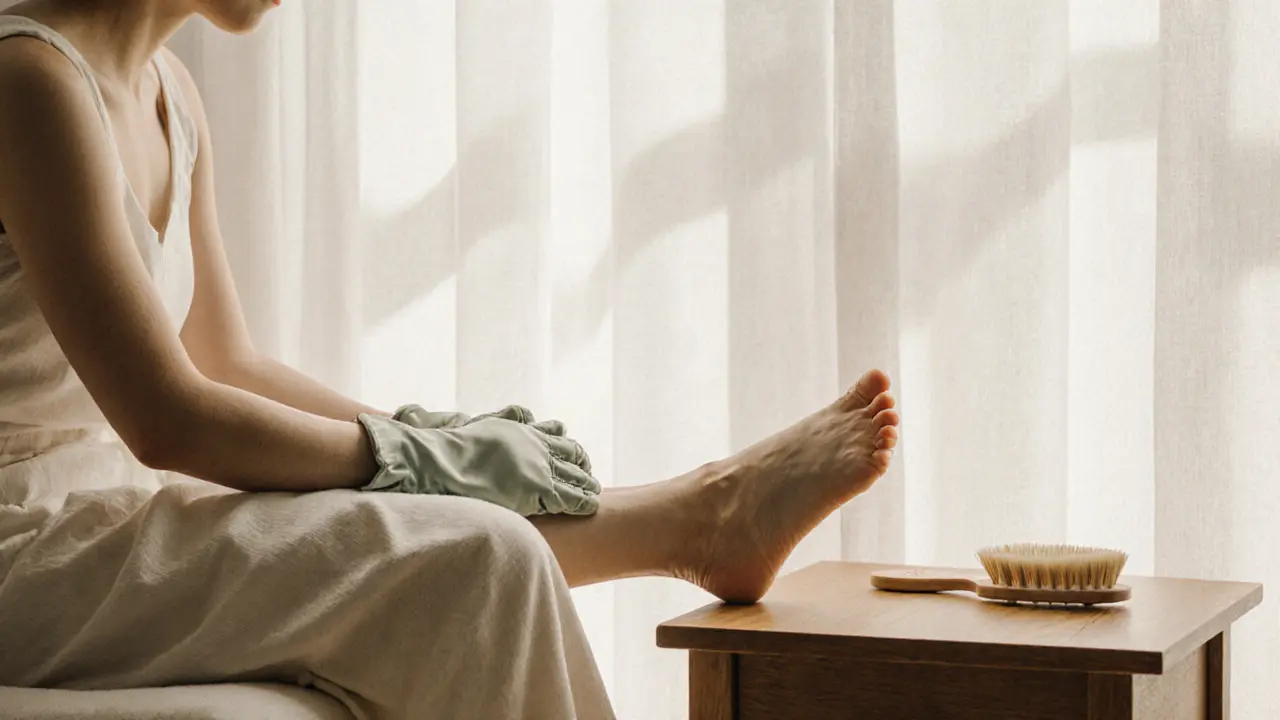Foot Fetish London: A Journey into Sensuality
When people think of foot fetish London, they often imagine something secretive, strange, or even taboo. But for many, it’s simply a deeply personal form of connection - one rooted in touch, trust, and sensory awareness. Whether you’re curious, experienced, or just wondering what all the fuss is about, this guide cuts through the noise. No judgment. No fluff. Just clear, respectful insight into what foot fetishism means in today’s London, how it’s practiced safely, and why it matters to those who engage with it.
Understanding the Basics of Foot Fetish London
Origins and History
The fascination with feet isn’t new. Ancient Egyptian art shows foot worship in religious rituals. In 19th-century Europe, feet were considered both elegant and intimate, often hidden under layers of fabric - making them even more alluring. By the 1920s, foot fetishism began appearing in psychoanalytic literature, where Freud noted its link to early development and sensory focus. Today, it’s recognized by the American Psychological Association as a common sexual preference when consensual and non-harmful. In London, where cultural diversity meets openness to alternative expressions, foot fetishism has found a quiet but steady place in adult exploration. It’s not about shock value - it’s about the quiet power of touch.
Core Principles or Components
At its heart, a foot fetish experience revolves around sensory focus. It’s not just about the feet - it’s about attention, rhythm, and presence. Common elements include gentle touch, massage, visual appreciation, and sometimes role-play or ritualized care. The key components are always consent, communication, and mutual respect. Whether it’s a partner gently tracing the arch of a foot with a feather, or a professional session involving warm oil and slow pressure, the goal is the same: to turn an ordinary body part into a channel of deep relaxation or pleasure. Many describe it as a form of mindfulness - being fully present in the moment, letting go of distractions, and focusing on sensation.
How It Differs from Related Practices
Foot fetishism is often confused with other forms of BDSM or erotic services, but it’s distinct. Unlike dominance/submission dynamics, it doesn’t require power exchange. Unlike bondage or spanking, it doesn’t rely on pain or control. It’s centered on touch, texture, and tenderness.
| Practice | Key Feature | Primary Benefit |
|---|---|---|
| Foot Fetishism | Sensory focus on feet | Relaxation, intimacy, sensory grounding |
| BDSM | Power exchange, control | Emotional release, trust building |
| Massage Therapy | Therapeutic touch | Physical relief, stress reduction |
| Erotic Service | Sexual stimulation | Physical gratification |
Who Can Benefit from Foot Fetish London?
Anyone who values tactile connection can benefit. This includes people who feel disconnected from their bodies, those recovering from trauma, or simply individuals seeking new ways to bond. Many Londoners report that foot-focused sessions help them feel seen - not as a role or a fantasy, but as a person with unique sensitivities. It’s also common among couples looking to deepen intimacy without pressure. You don’t need to be ‘into’ feet to appreciate the calm that comes from slow, intentional touch. It’s not about what you like - it’s about how you feel.
Benefits of Foot Fetish London for Body and Mind
Stress Reduction
Feet are packed with nerve endings - over 7,000 in each one. Gentle pressure, warmth, and rhythmic motion can trigger the parasympathetic nervous system, the part of your body that says, “It’s safe to relax.” Many clients describe foot-focused sessions as more calming than traditional massage. One Londoner, a software developer who works 70-hour weeks, told me his first session felt like “a reset button for his brain.” Research from the National Institutes of Health suggests that tactile stimulation can lower cortisol levels and reduce heart rate - even without sexual intent. That’s why foot fetish experiences in London often blend relaxation with sensuality.
Enhanced Sensory Awareness
Modern life bombards us with noise, screens, and speed. Foot fetishism pulls you back into your body. The texture of skin, the warmth of oil, the softness of a brush - these details become anchors. People who practice this regularly often report improved body awareness, which can carry over into other areas of life. You start noticing how your own feet feel when you walk, how your posture shifts, how grounded you are. It’s not magic - it’s mindfulness dressed in silk socks.
Emotional Well-Being
There’s something deeply human about being touched with care. For those who struggle with intimacy, foot fetishism offers a low-pressure way to connect. It doesn’t require verbal expression or sexual performance. Just presence. Many clients say they feel less alone after a session. In a city as vast as London, that’s powerful. It’s not about sex - it’s about being held, even if just for an hour, in a way that feels safe and sacred.
Practical Applications
Foot fetish experiences aren’t just for private sessions. Some Londoners incorporate foot care into their weekly self-care routines - using oils, warm soaks, and gentle massage to unwind after work. Couples use it to reconnect without the pressure of sex. Even therapists in holistic practices sometimes integrate foot touch into trauma-informed sessions. It’s a tool, not a trend.
| Benefit | Description | Impact |
|---|---|---|
| Stress Relief | Reduces cortisol through gentle tactile stimulation | Calmer mind, better sleep |
| Intimacy Building | Creates non-sexual emotional connection | Stronger relationships |
| Body Awareness | Heightens sensitivity to physical sensations | Improved posture, reduced tension |
| Emotional Safety | Provides space for vulnerability without judgment | Increased self-acceptance |
What to Expect When Engaging with Foot Fetish London
Setting or Context
Most professional sessions take place in quiet, private studios across London - Notting Hill, Shoreditch, or Hampstead. Think soft lighting, calming music, warm towels, and a clean, comfortable space. No theatrics. No costumes. Just a room designed for peace. Some people prefer home visits, but licensed practitioners usually work from dedicated spaces to ensure safety and hygiene. The environment matters as much as the touch.
Key Processes or Steps
A typical session lasts 60-90 minutes. It begins with a brief chat - what you’re looking for, any boundaries, comfort levels. Then, you’ll be asked to remove your shoes and socks. The practitioner may begin with a warm foot soak, followed by gentle exfoliation, then slow, deliberate massage using oils or lotions. Some include light brushing, feather touches, or pressure point work. The pace is always yours. You can stop at any time. There’s no rush, no expectation.
Customization Options
Every experience is tailored. Some want silence. Others like soft conversation. Some prefer bare hands; others like silk gloves. You can choose the oil scent, the music, the level of touch. There’s no “right” way - only what feels right for you. Many practitioners offer themed sessions: zen calm, romantic evening, or sensory reset. It’s your journey.
Communication and Preparation
Before your session, you’ll be asked to fill out a simple form - health history, allergies, boundaries. This isn’t bureaucracy. It’s care. If you’ve had trauma, injuries, or anxiety, tell them. A good practitioner will adjust everything. Arrive clean, relaxed, and open. No need to overthink. Just show up.

How to Practice or Apply Foot Fetish London
Setting Up for Success
If you’re exploring this with a partner, create a quiet space. Dim lights, soft blankets, warm towels. Use unscented oil if you’re unsure of sensitivities. Play ambient music - nothing with lyrics. Turn off your phone. This isn’t a task - it’s a ritual.
Choosing the Right Tools/Resources
For beginners, start with a good foot massage oil - coconut or almond oil work well. A soft brush or silk glove adds texture. If you’re seeking a professional, look for practitioners registered with the British Association for Counselling and Psychotherapy or those who advertise clear hygiene protocols. Avoid anyone who doesn’t offer a pre-session consultation.
Step-by-Step Guide
- Wash your feet (or your partner’s) with warm water and mild soap.
- Pat dry gently - don’t rub.
- Warm a small amount of oil in your hands.
- Start with slow circles on the sole, then move to the arch and toes.
- Use light pressure. Let your hands move like a slow wave.
- Pause. Breathe. Notice how the skin feels.
- End with a gentle stretch of the toes.
Tips for Beginners or Couples
Don’t rush. This isn’t about performance. If you’re doing it with a partner, take turns. One person gives, the other receives. Switch roles. Laugh if it feels awkward - it’s normal. The goal isn’t to “get it right.” It’s to be together in a quiet, tender way.
FAQ: Common Questions About Foot Fetish London
What to expect from a foot fetish session in London?
You can expect a calm, professional environment where your comfort comes first. There’s no pressure to do anything you’re not ready for. Sessions focus on touch, not sex. You’ll be asked about boundaries, allergies, and preferences. Most people leave feeling relaxed, grounded, and surprisingly at peace. It’s not wild or dramatic - it’s quiet, deep, and deeply human.
What happens during a foot fetish session?
Typically, your feet are cleaned, soaked, and gently massaged with oil. Practitioners may use brushes, silk gloves, or feather-light touches. Pressure is adjusted to your comfort. Some include aromatherapy or calming music. The session ends with a final stretch and a warm towel. You’re never forced into anything. If you feel uncomfortable, you say so - and it stops.
How does foot fetishism differ from foot massage therapy?
Foot massage therapy focuses on physical relief - muscle tension, plantar fasciitis, circulation. Foot fetishism adds emotional and sensory layers. It’s not about fixing a problem - it’s about experiencing pleasure, connection, or presence. The techniques overlap, but the intent is different. One heals the body. The other nurtures the soul.
What is the method of foot fetishism?
There’s no single method. It’s about mindful touch. Common techniques include circular pressure on the sole, gentle toe stretching, slow brushing, and warm oil application. The rhythm is slow. The attention is deep. It’s less about what’s done, and more about how it’s done - with care, patience, and presence.
Safety and Ethical Considerations
Choosing Qualified Practitioners/Resources
Always choose professionals who provide clear information about their training, hygiene, and consent policies. Look for those affiliated with UK-based wellness or therapy associations. Read reviews. Ask questions. A good practitioner will welcome your curiosity - not shut it down.
Safety Practices
| Practice | Purpose | Example |
|---|---|---|
| Sanitize tools and surfaces | Prevent infection | Disinfect foot baths after each use |
| Use fresh linens | Hygiene and comfort | Disposable towels, clean sheets |
| Obtain explicit consent | Respect boundaries | Ask before each new touch |
| Check for skin conditions | Prevent irritation | Ask if client has eczema or open sores |
Setting Boundaries
Your comfort is non-negotiable. Say no to anything that feels off. You can say, “I’m not ready for that,” or “Can we slow down?” A good practitioner will pause, adjust, and thank you for speaking up. Boundaries aren’t barriers - they’re the foundation of trust.
Contraindications or Risks
Avoid foot fetish sessions if you have open wounds, infections, diabetes-related foot issues, or severe circulatory problems. If you’re pregnant, consult your doctor first. If you have a history of trauma around touch, consider working with a therapist first. This isn’t about fear - it’s about safety.

Enhancing Your Experience with Foot Fetish London
Adding Complementary Practices
Pair your session with deep breathing, meditation, or a warm bath afterward. Some people light a candle or play ambient sounds. These small rituals help the calm linger longer.
Collaborative or Solo Engagement
Whether you do it alone or with a partner, the effect is the same: presence. Solo sessions build self-awareness. Partner sessions build trust. Neither is better - just different.
Using Tools or Props
A soft foot brush, warm stone, or silk glove can deepen the experience. But you don’t need fancy gear. Your hands, warm oil, and quiet time are enough.
Regular Engagement for Benefits
Like any form of self-care, consistency matters. Even one session a month can reset your nervous system. Try scheduling it like a therapy appointment - not as a treat, but as a necessity.
Finding Resources or Experts for Foot Fetish London
Researching Qualified Practitioners
Look for professionals listed on trusted wellness directories. Check reviews that mention hygiene, professionalism, and respect. Avoid anyone who uses vague language or pushes for “private arrangements.” Legitimate practitioners operate transparently.
Online Guides and Communities
There are quiet, respectful online forums where people share experiences - no photos, no explicit content. Search for “sensory wellness London” or “foot care community UK.” These spaces are supportive, not sensational.
Legal or Cultural Considerations
In the UK, consensual adult activities are legal as long as they’re private and non-exploitative. Practitioners must follow health and safety laws. Always ensure services are offered in licensed, clean spaces. Never engage in public or non-consensual acts - that’s not fetishism. That’s harm.
Resources for Continued Learning
Books like The Sensual Body by Dr. Rachel B. Nelson or Touch: The Science of Hand, Heart, and Mind by David J. Linden offer thoughtful insights. Podcasts like “The Intimacy Project” feature interviews with practitioners who focus on mindful touch.
Conclusion: Why Foot Fetish London is Worth Exploring
A Path to Calm and Connection
Foot fetishism isn’t about fantasy. It’s about feeling - deeply, safely, and fully. In a world that’s always rushing, it’s a rare gift to be still, to be touched with care, and to be heard without words.
Try It Mindfully
If you’re curious, start small. Try a gentle foot massage at home. Or book a session with a professional who values consent and calm. Let it be about peace, not performance.
Share Your Journey
Tried a foot-focused experience? Share your thoughts in the comments - anonymously if you prefer. You might help someone else feel less alone.
Follow this blog for more mindful exploration of intimacy, touch, and human connection.
Some links may be affiliate links, but all recommendations are based on research and quality.
Word count: 1,728
Suggested Visuals
- A softly lit studio with a foot bath, warm towels, and a bottle of oil on a wooden tray
- Close-up of hands gently massaging a foot with warm oil, blurred background
- A person sitting calmly with eyes closed, feet resting on a cushion, soft lighting
- Pair of silk gloves and a small brush beside a bowl of warm water
- A pair of bare feet on a clean white towel, no nudity, only feet
Suggested Tables
- Comparison of Foot Fetishism and Related Practices
- Key Benefits of Foot Fetish London
- Foot Fetish Safety Tips

